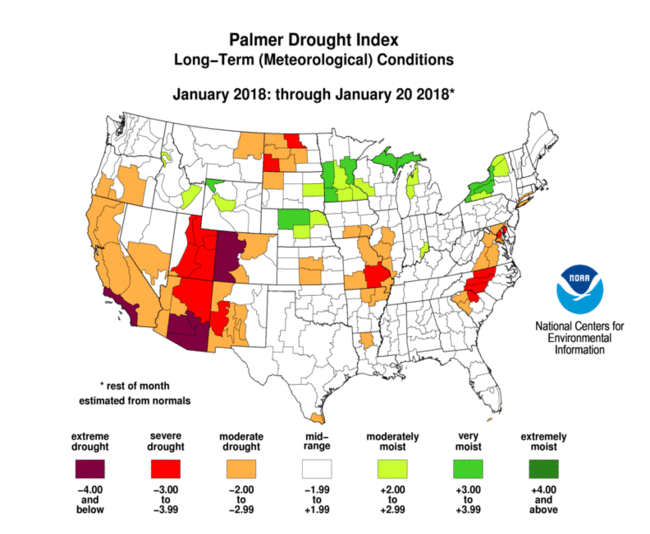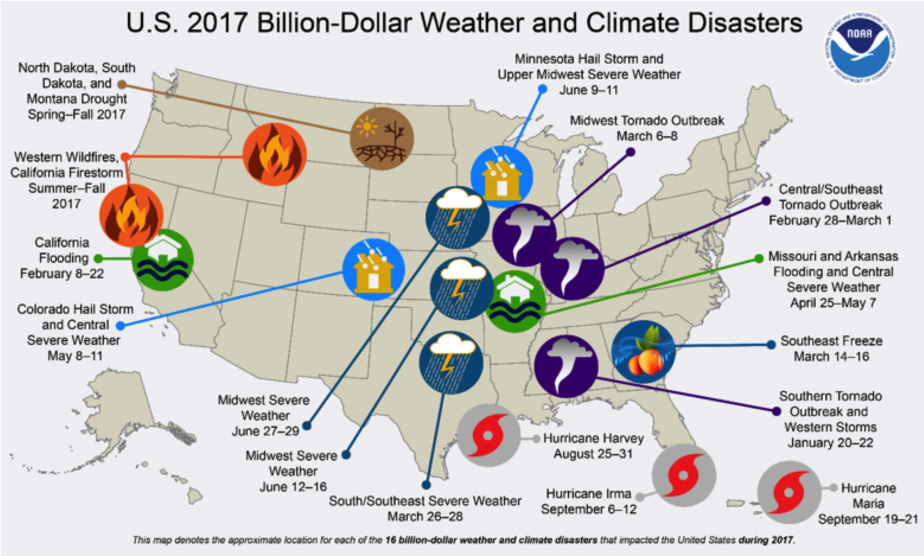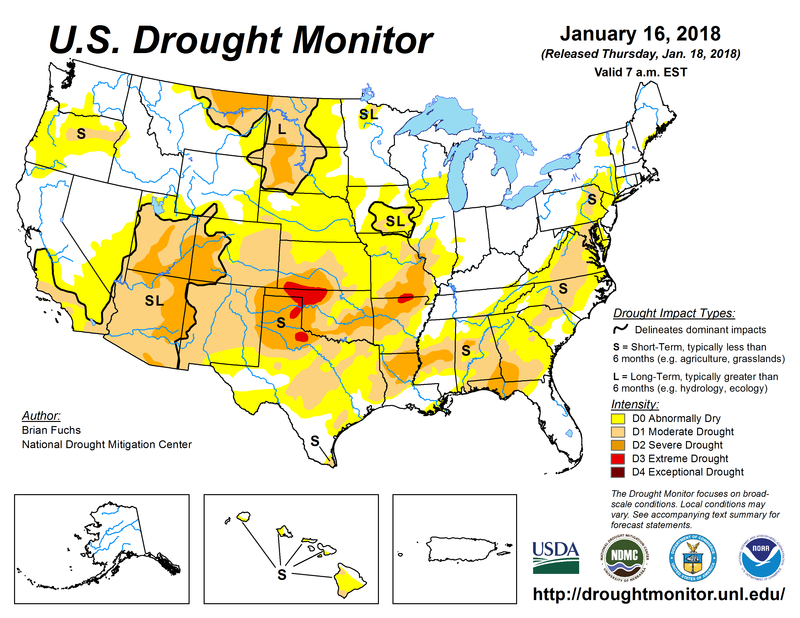How the U.S. Drought Monitor Assists Ranchers and Federal Agencies Manage Drought Impacts

Drought is Costly—Information Manages Risks
Drought is the second costliest weather disaster in the United States, according to NCEI’s Billion Dollar Disasters calculations. However, unlike hurricanes, tornadoes, and floods, which can create immediate and visible damage, drought develops quietly and slowly, often without apparent impacts until water shortages become severe and crops wither. Livestock producers monitor drought to understand the severity of current conditions and to gauge how the drought may evolve or when it may end. This provides them with critical environmental information that allows them to manage risk.
 “When we first started, our priorities were production of the livestock,” says Jim Faulstich, a cattle rancher in Highmore, South Dakota. Rather than solely focusing on cattle production, his ranch gives greater attention to managing the land. “We soon learned that (cattle) shouldn’t be where our top priority is. We switched to natural resources.”
As drought reduces the quality of pasture lands, ranchers may have to consider purchasing additional feed for their animals. Timing purchases is important if feed prices rise due to higher demand and dwindling supplies. If drought is particularly extreme or long-lasting and feed becomes too expensive, ranchers may have to reduce their herds.
Having an easily accessible tool to monitor drought in near-real time is important to a range of additional stakeholders besides ranchers; its value extends to livestock prospectors and traders, landowners who lease grazing land, livestock associations, and federal and state agencies that administer drought-relief programs or that manage federally owned land. Overall, the U.S. livestock industry generates more than $100 billion in annual revenues.
“When we first started, our priorities were production of the livestock,” says Jim Faulstich, a cattle rancher in Highmore, South Dakota. Rather than solely focusing on cattle production, his ranch gives greater attention to managing the land. “We soon learned that (cattle) shouldn’t be where our top priority is. We switched to natural resources.”
As drought reduces the quality of pasture lands, ranchers may have to consider purchasing additional feed for their animals. Timing purchases is important if feed prices rise due to higher demand and dwindling supplies. If drought is particularly extreme or long-lasting and feed becomes too expensive, ranchers may have to reduce their herds.
Having an easily accessible tool to monitor drought in near-real time is important to a range of additional stakeholders besides ranchers; its value extends to livestock prospectors and traders, landowners who lease grazing land, livestock associations, and federal and state agencies that administer drought-relief programs or that manage federally owned land. Overall, the U.S. livestock industry generates more than $100 billion in annual revenues.
 [U.S. Drought Monitor map and narrative summary are released each week by Drought.gov]
CEI supports the USDM with analysis and weather data that are used to create drought designations. The designations reported each week describe drought conditions across the country, from abnormal dryness to exceptional drought. The USDM consolidates information from drought indicators, climate and hydrological data, soil measurements, models, and local observations. Not only does NCEI supply data, but our scientists also add scientific analysis of drought conditions in descriptive, narrative summaries.
[U.S. Drought Monitor map and narrative summary are released each week by Drought.gov]
CEI supports the USDM with analysis and weather data that are used to create drought designations. The designations reported each week describe drought conditions across the country, from abnormal dryness to exceptional drought. The USDM consolidates information from drought indicators, climate and hydrological data, soil measurements, models, and local observations. Not only does NCEI supply data, but our scientists also add scientific analysis of drought conditions in descriptive, narrative summaries.
Drought Conditions Determine Assistance
Because drought conditions can significantly impact the livestock industry, government officials created a mechanism to provide feed assistance to farmers that takes into account the USDM. When drought conditions meet certain thresholds over time, financial assistance is triggered per location based on the severity of the event. The USDA’s Livestock Forage Program, part of the 2014 Farm Bill, set the criteria for disaster assistance using USDM drought designations. Assistance can be received as soon as 30 days after drought impacts merit aid.
“It allows us to process applications in real time,” says executive officer Jamie White of the USDA Farm Service Agency in South Dakota. “That provides necessary resources to the livestock producer in real time to purchase additional feed as needed.” In addition to NCEI, several organizations support the USDM, including the Department of Commerce, the USDA, NOAA’s Climate Prediction Center of the National Weather Service, the National Drought Mitigation Center, and the National Integrated Drought Information System. Edited for WeatherNation by Meteorologist Mace Michaels